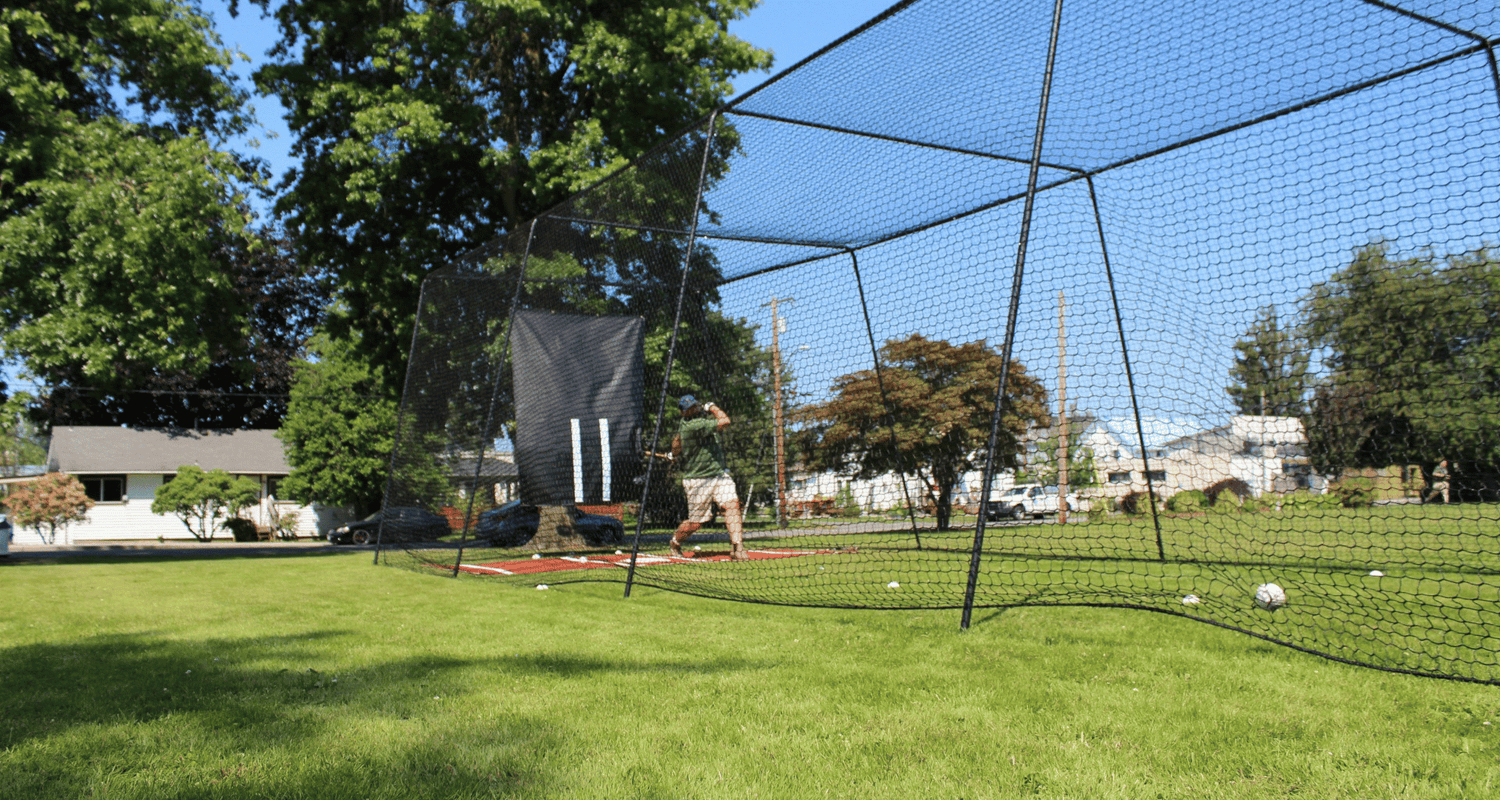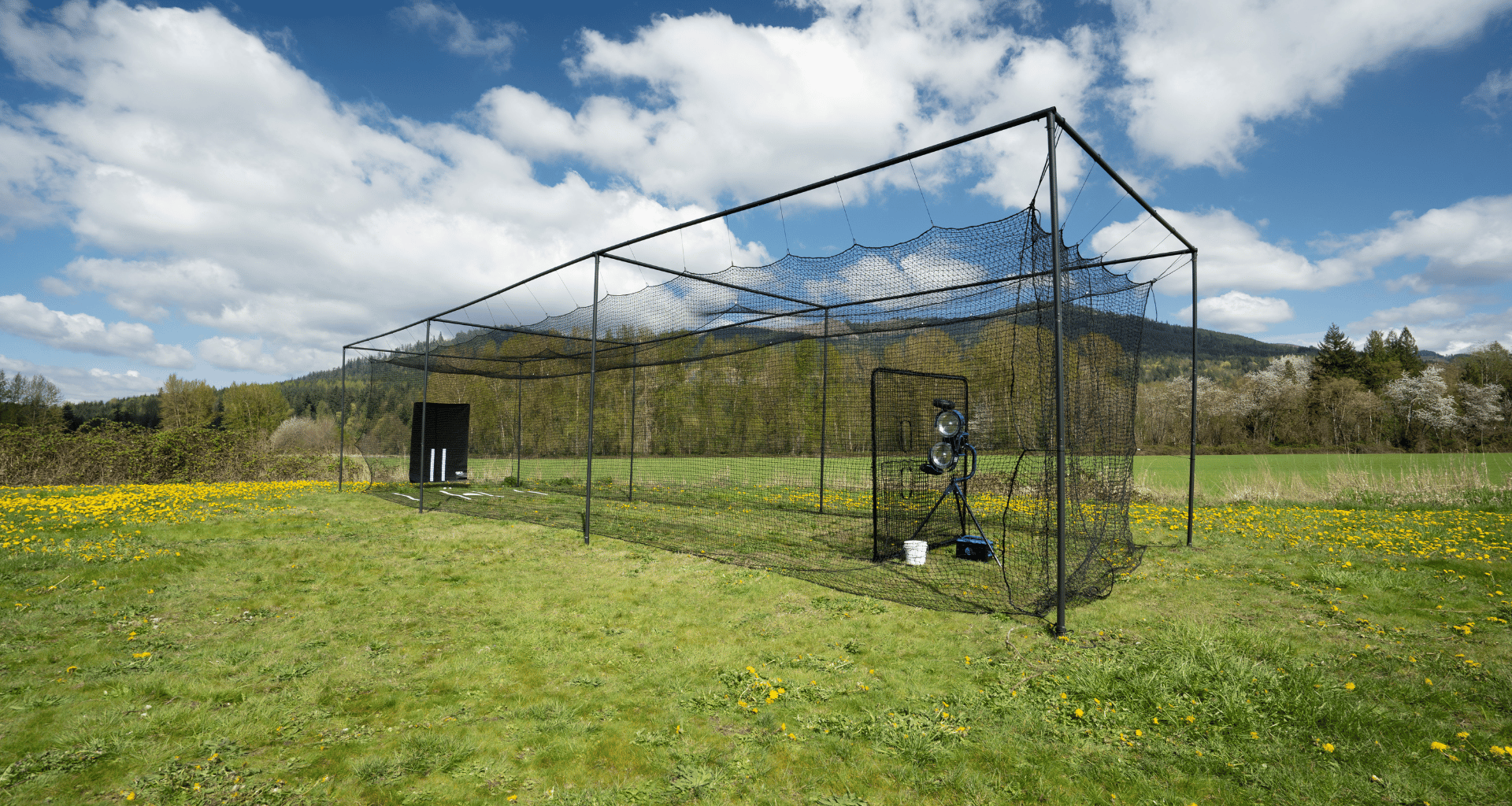Hitting in a batting cage involves a degree of risk; here are our suggestions to minimize that risk.
MOVES FREELY

Make sure the netting moves freely for maximum wear and ball control. Don't secure the bottom rope or tie the bottom down in any way. It needs to be able to move in order for the netting to absorb the speed of the ball.
BE AWARE OF YOUR SURROUNDINGS

Make sure the netting doesn't contact anything solid, such as a wall or chain link fence.
KEEP SPECTATORS AWAY

Always keep spectators behind the hitter and a safe distance from the net.
INSPECT

Inspect netting regularly for any area where a ball might go through. Netting is subject to wear, and this wear rate is completely subject to the following factors.
- Amount of Use.
- More use equals faster wear
- Weather Conditions.
- The more sun, the shorter the lifespan. High winds will present side load on the netting and thus the frame, much like a sail on a boat. If the weather prediction is for strong winds, we recommend taking down the netting.
- Netting Tension.
- We recommend hanging netting loosely. The tighter the net, the faster it will wear out.
JUST STOP

If the netting is worn or damaged, stop using it until it is replaced or repaired.
MIND ALTERING

Using the batting cage under the influence of any mind altering substance increases the risk of injury.
STAY SAFE

Always use protective gear such as L-screens and helmets inside a batting cage.
That's it. Follow these tips and you should be good to go! Be sure to share this with anyone you know that has or uses a batting cage. Be safe out there.
-BCI




Leave a comment
All comments are moderated before being published.
This site is protected by hCaptcha and the hCaptcha Privacy Policy and Terms of Service apply.